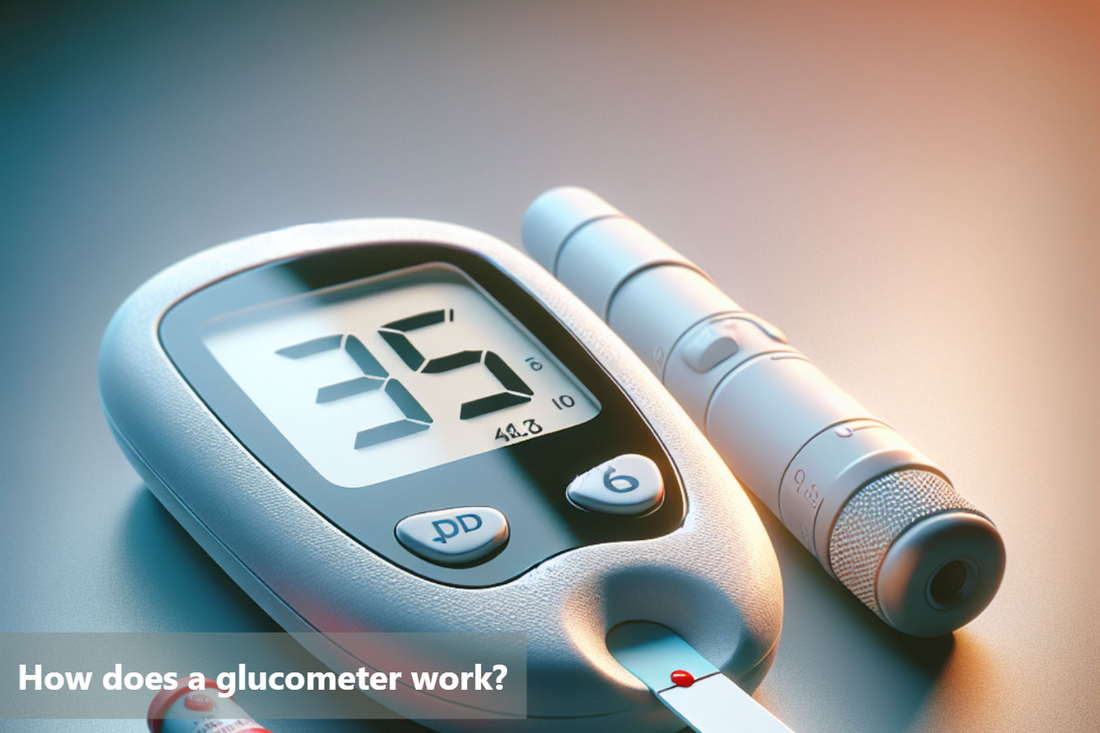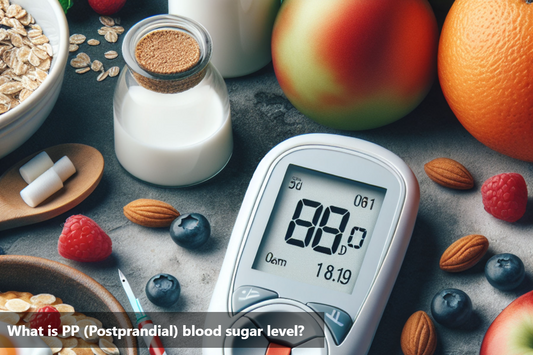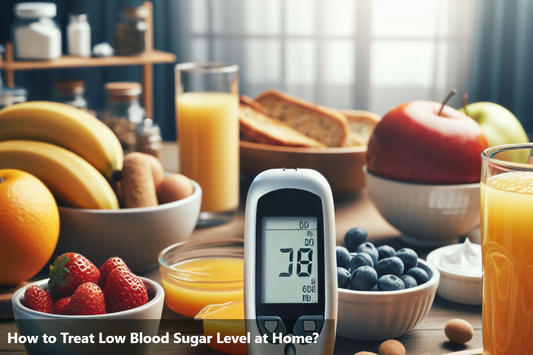A Glucometer, also known as a glucose meter, is a portable device used to measure blood sugar levels. It is essential for individuals with diabetes to monitor their glucose levels at home. The glucometer provides immediate feedback, allowing informed decisions on diet, medication, and health. By pricking the skin and placing blood on a test strip, the device measures blood sugar levels digitally. Understanding and using a glucometer helps individuals manage diabetes and improve their quality of life.
Parts of a Glucometer
A glucometer, also known as a blood glucose meter, is a crucial device for individuals managing diabetes. Understanding the different components of a glucometer and their functions is essential for accurate blood sugar readings.
-
Test Strips: These strips are where a small drop of blood is placed for testing. The strip contains chemicals that react with glucose in the blood.
-
Meter: The meter reads the reaction on the test strip and displays the blood glucose level. It usually has a screen to show the results.
-
Lancet & Lancet Device: The lancet is a small needle that pricks the finger to obtain a blood sample. The lancet device holds the lancet and controls the depth of the prick.
-
Control Solution: This solution is used to ensure the glucometer is providing accurate results by testing it with a known glucose level.
-
Battery: The battery powers the glucometer for operation. It is essential to ensure the device functions correctly.
Understanding these components and their roles in the device is key to utilizing a glucometer effectively for monitoring blood glucose levels accurately.
Principles of Glucometer
The glucometer is a vital tool for individuals managing diabetes. It operates based on the principle of enzymatic reactions to determine blood glucose levels accurately. When blood is added to a test strip, the enzyme glucose oxidase catalyzes the oxidation of glucose into gluconic acid and hydrogen peroxide.
The amount of hydrogen peroxide produced is directly proportional to the concentration of glucose in the blood sample. This reaction generates an electric current, which is measured by the glucometer. The device then calculates the corresponding blood glucose level based on this current.
Understanding these principles is crucial for users to have confidence in the accuracy of their glucometer readings. Each component within the glucometer plays a specific role in ensuring the precision of the measurement.
Regular calibration and maintenance of the device are necessary to guarantee consistent and reliable results. By comprehending the scientific foundations of glucometer operations, individuals can effectively monitor and manage their blood sugar levels, leading to better control of their diabetes.
Working of Glucometer
A glucometer is a vital tool for individuals managing diabetes, allowing them to monitor their blood sugar levels accurately and effectively. Let's delve into how a glucometer works to provide these important readings.
-
Preparation: Begin by gathering all the necessary supplies - a test strip, lancet, and the glucometer machine itself.
-
Insert Test Strip: Insert a test strip into the glucometer according to the instructions provided by the manufacturer.
-
Lancing: Use the lancet to prick your finger, allowing a small drop of blood to form.
-
Blood Sample: Carefully touch the blood drop to the designated area on the test strip.
-
Measurement: The test strip draws the blood sample in and initiates the measurement process using its technology.
-
Reading Display: Within seconds, the glucometer displays your blood sugar level on its screen.
-
Recording Data: Take note of the reading and any additional information required for tracking purposes.
By following these simple steps, you can effectively use a glucometer to monitor your blood glucose levels at home, enabling you to make informed decisions about your diabetes management.
To conclude:
In summary, we have explored the world of glucometers, looking at why they are important and how they work. A glucometer, which is also called a glucose meter or blood glucose monitor, is a necessary tool that instantly checks blood sugar levels. It's crucial to know the different parts of a glucometer because each piece helps give accurate results. Glucometers work by using chemical reactions to change glucose levels into electronic signals that we can measure. Understanding how a glucometer works allows people to easily keep track of their blood sugar levels at home.
Confused with terminologies like Low GI etc? DiabeSmart Food Products are crafted for Diabetics. They are clinically tested and have a great taste; so your food habits don't change.
FAQs on How Glucometers Work
-
Q: How do glucometers measure blood sugar levels? A: Glucometers use test strips with electrodes that react with glucose in a blood sample, producing an electrical current that the meter measures and converts into a blood sugar reading.
-
Q: Are glucometers accurate in measuring blood glucose levels? A: Glucometers are designed to be precise and accurate within a certain range when used correctly, but factors like user error, age of the device, and environmental conditions can affect accuracy.
-
Q: What is the role of lancets in using a glucometer? A: Lancets are small needles used to prick the skin for blood samples. They are typically part of a glucometer kit and are used to obtain a blood droplet for testing blood sugar levels.
-
Q: How often should glucometers be calibrated for accurate readings? A: Glucometers should be calibrated regularly as per the manufacturer's instructions to ensure accurate readings. Factors like low battery, temperature changes, or dropping the device can affect calibration.
-
Q: Can factors like food, exercise, or medication intake impact glucometer readings? A: Yes, various factors like recent food intake, physical activity, or certain medications can affect blood sugar levels and thereby impact the glucometer readings. Users are advised to follow guidelines for accurate testing.
This Blog post is an initiative by DiabeSmart, to provide accurate and Nutritionist / Doctor approved information related to Diabetes. DiabeSmart is India's first Food brand designed specifically for Diabetics, that has been clinically tested on Diabetics and Pre-Diabetics to deliver 55% - 70% lower Sugar spikes. DiabeSmart is part of Lo! Foods - India's leading brand for Everyday Functional Health foods.















